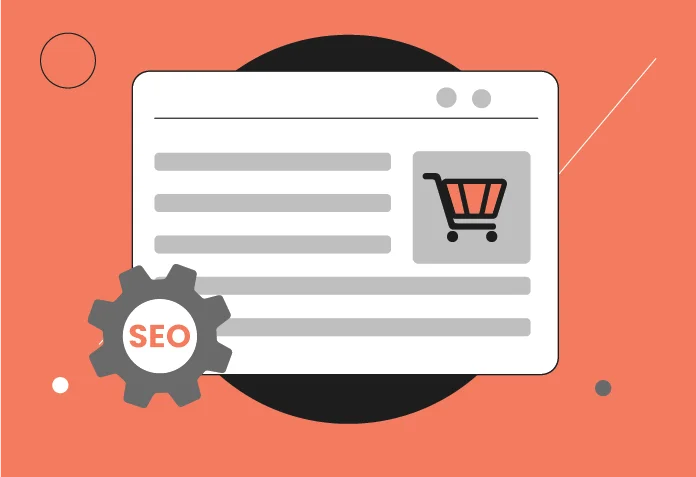In today’s dynamic digital marketplace, choosing the right e-commerce platform is crucial for growing businesses. As companies scale, they often face the decision: Shopify vs WooCommerce. Both platforms offer powerful features, but selecting the best fit depends on specific business needs and goals. Shopify is known for its ease of use and all-in-one functionality, making it a popular choice for entrepreneurs looking to quickly build a strong online presence and customer base. Meanwhile, WooCommerce appeals to those seeking flexibility and control within the WordPress ecosystem.
However, as e-commerce sites start experiencing rapid growth, they also face operational complexities. This then makes limitations visible on the web platforms in use.
The limitations of a fully hosted platform have become evident. The process may involve going from one platform to another. Research indicates that this process is gaining pace so as brands seek the following for their growing needs:
- More Control.
- Enhanced Customization Capabilities.
- Cost-optimized solutions.
Now let us unpack some facts of how Shopify fares compared to WooCommerce in the context of the following factors:
- Scaling down both platforms.
- How can they handle large volume loads in peak times?
- Discovering the level of SEO flexibility in both platforms.
- Uncovering overlooked hidden costs associated with both Shopify and WooCommerce.
Overview of Shopify vs WooCommerce
The current e-commerce landscape offers a wide range of platforms. They all cater to the differing needs and technical proficiencies of online businesses.
Both Shopify and WooCommerce stand out as solutions that have carved a distinct niche in the market.
Understanding the pros and cons of Shopify or WooCommerce is essential to selecting the platform that aligns best with your business goals and budget.
A little bit about Shopify
Shopify is a fully hosted platform positioned as an all-in-one solution, managing all the technical complexities of running an online store. This forms a good part of its appeal. It hence removes the need to worry about the following:
- Security updates.
- Server management.
- Software installations.
Shopify manages everything, from the website’s infrastructure to payment processing channels and integrations. Merchants can thus focus on key business activities. Shopify is easy to use and quick to set up. Its intuitive interface and guided processes make it user-friendly, especially for those with limited technical acumen.
Launching a store on it is as easy as it uses a direct-to-consumer (DTC) model for quickly reaching the market. Shopify also offers a broad array of pre-designed themes and a strong app store. It allows for customization and the addition of functionalities without extensive coding knowledge. The platform has a strong and user-friendly ecosystem. For more advanced customization or scaling, many businesses choose to partner with top Shopify development companies to maximize the platform’s potential and tailor it to their specific needs.
A little bit about WooCommerce
WooCommerce works as a WordPress plugin. This is different from Shopify’s hosted approach and supports its core characteristics, plus its target audience. WordPress, as a content management system (CMS), powers a good portion of the internet.
Such an integration provides quite an advantage, e.g., it seamlessly blends eCommerce functions into a strong CMS, thus making it ideal for brands that give priority to content marketing and a strong blog presence, plus their online store. With the added benefit of custom WordPress web design, businesses can further tailor their site’s look and functionality to match their brand identity.
WooCommerce has an open-source nature. It translates into being highly customizable. Compared to Shopify, it provides users more control over their online store’s code and infrastructure. This helps with extensive modifications and the ability to customize each aspect of the store to precise specifications. For instance, store owners can leverage features like Dynamic Pricing in WooCommerce to create flexible pricing strategies tailored to their business goals. It has an open-source nature, and that’s why it is customizable.
Scalability: How Each Platform Handles Growth
Each platform should have the ability to manage the rising amount of traffic during peak demands.
Shopify comes in handy in this area. It offers a strong infrastructure that is designed to control significant volumes of orders and traffic.
Shopify does have an extensive app ecosystem that provides readymade solutions for adding functionalities.
However, it has limited backend control, which can become a bottleneck for highly customized scaling tactics. Relying on its apps and plugins can bloat the platform & thus raise costs.
Scaling beyond a certain point reveals a growth ceiling thanks to rigid template structures. This results in more expenses.
WooCommerce makes use of a customizable server environment, which gives businesses, brands, and companies more control over their server resources. It helps them accommodate more room for growth and scalability. This flexibility is especially useful for businesses that manage complex logistics or depend on reliable courier services to fulfill online orders efficiently.
It has an open-source nature that allows for scalability via a vast array of plugins or implementation of custom code, offering virtually limitless possibilities for customizing the platform towards complicated scaling requirements. This makes WooCommerce suitable for multi-store setups, multilingual expansions, and scalability involving highly customized products/services. AdTribes helps store owners take full advantage of this flexibility by making product feed management easier and more efficient.
But this kind of flexibility has a cost of its own. Site owners must have technical knowledge, as the hosting burden falls on the business owning the site. Dedicated IT support companies is needed to keep the site afloat, along with robust cybersecurity.
Flexibility in SEO: Which Platform Will Give You More Organic Leverage?
Shopify has in-built features giving a good eCommerce foundation (meta tags, sitemaps), but it has limitations in the URL structure area. Moreover, it has restricted server file access, which makes relying on paid apps necessary for advanced-level optimization.
Brands that are scaling and giving organic growth priority can go for WooCommerce. It offers very good SEO flexibility. Being part of WordPress, it grants site owners complete control over websites and provides the following advantages:
- Native access to the website’s code.
- Implementation of Schema Markup.
- Comprehensive optimization of images.
- Robust plugins like Rank Math/Yoast enable highly customized strategies.
WooCommerce is advantageous for brands scaling through content-enriched eCommerce models, where granular SEO control is crucial for enhancing organic visibility. To further bolster these efforts, joining a link-building community can provide access to collaborative networks and strategies that drive high-quality backlinks.
Moreover, leads from a mobile app development company in Dubai find making mobile sites of WordPress sites quite easy too. Shopify sites can be made, but WordPress, being a comprehensive content management system, makes this work quite easy.
Shopify vs WooCommerce: Uncovering the Hidden Costs You Need to Know
Shopify may offer seemingly straightforward monthly charges, but its transaction fees can be high (unless Shopify Payments is used). The app costs for essential features can accumulate in large margins, especially for inventory management, analytics, and SEO. Shopify Plus has expensive pricing and has ambiguity in terms, too. However, if you want to streamline your setup, there are tools that show how to easily collect payments, helping reduce extra fees and complications.
WooCommerce has a free base plugin. However, it does have essential costs to consider. Hosting expenses are from external providers, and that can be expensive depending on the scale of operations. Premium extensions and plugins for advanced functionalities cost more.
Moreover, site owners need to make a budget for potential developers and maintenance expenses. It is required for customization and ongoing support. Long-term value should be considered in comparison to the initial upfront investment.
The expense breakdown table for both is as under:
| Feature | Shopify (Basic/Premium) | WooCommerce of WordPress |
| Web Hosting | Included | $ 10- Beyond $100 a month |
| Apps and Plug-ins | $50 a month/More than $300 a month | $20-Beyond $200 a month |
| Transaction Fees | 2% unless Shopify Payments is used | Depends on the payment gateway in use |
| Custom Development | Limited space for customization | Easy to customize |
Use Cases: Who Should Businesses Choose Between Shopify and WooCommerce?
Shopify is the optimal choice for businesses wanting to reach the market quickly. The platform has an intuitive interface and a comprehensive set of features that enable stores and product listings to be created quickly.
It is suitable for those using a Direct-to-Consumer (DTC) approach and also for those who have limited technical acumen. Dropshipping and subscription business models will also find Shopify worth it.
Shopify’s strengths lie in its user-friendly nature and scalable infrastructure. It does not require extensive technical knowledge. Those comparing it with other platforms may also consider woocommerce maintenance services to evaluate which option aligns best with their growth goals. Businesses that prioritize speed and streamlined operations can use it. Here are some use cases of the platform:
- Quick-growing DTC brands: FashionNova and Kylie Cosmetics use it for quick scaling.
- Subscription-based businesses: Death Wish Coffee and FabFitFun make good use of recurring payments.
- Dropshipping: Numerous small and medium businesses use it for smooth operations and lean inventory management.
- Small and Medium Businesses across industries: MVMT watches uses it for versatile online sales.
- The platform supports creator merchandise for content creators and influencers. Social commerce helps brands sell directly on social platforms.
Here are the brands across various industries using Shopify:
| Category | Name of Brand |
| Apparel and Fashion | Allbirds, Decathlon, Fashion Nova, Gymshark, Herschel Supply Co., Oh Polly, and Triangl. |
| Beauty and Cosmetics: | Kylie Cosmetics, Haus, Range Beauty. |
| Food and Drink | Whole Foods Market, Red Bull GmbH. |
| Gadgets and Technology | Fitbit, Netflix, and Merchandise (their respective merchandise stores). |
| Other industries | Penguin Books, Huel, Hismile, Knix, SIMBA. |
WooCommerce, on the other hand, proves to be beneficial for those who are scaling both commerce and content. It provides seamless integration with WordPress.
This helps many create content-enriched strategies that are important for both customer engagement and search engine optimization (SEO).
The platform also helps businesses requiring content integration and customization, thanks to its extensive plugin ecosystem. Its SEO friendly and open-source nature helps cater to wide and complex requirements. Here are some of its use cases:
- Brands requiring blogs and rich media in their stores (fashion, lifestyle) can go for its content-enriched eCommerce feature.
- Businesses requiring a good focus on SEO can make use of WordPress’s strong SEO capabilities and plugins (as WooCommerce is of WordPress plugin).
- Online stores in WooCommerce are highly customizable, and brands that need unique designs and functionalities are in luck.
- Publishing and media companies, especially news sites, ecommerce blogs, and online magazines, find WooCommerce highly suitable (thanks to customization).
- Businesses that have existing WordPress sites can seamlessly add eCommerce functionality.
- International stores and those catering to multilingual audiences can use plugins providing support for multiple languages.
- Companies working on B2B eCommerce can customize pricing and other customer-centric features.
- eCommerce sites providing customers with membership can provide customers access to both communities and content.
Here are the brands that are using WooCommerce:
| Category | Name of Brand |
| Apparel and Fashion | April Soderstrom, Karmin Professional, |
| Beauty and Cosmetics: | Good Dye Young, Sodashi. |
| Food and Drink | Daelmans Stroopwafels, Eat Grub. |
| Gadgets and Technology | Orange Amps, Yubico. |
| Other industries | Amundsen Sports, JOCO Cups, Offerman Woodshop, Printing New York, Wild at Heart. |
Final Verdict: Which Platform Wins for Scaling Brands?
The choice between Shopify vs WooCommerce often comes down to the specific priorities of an online store. WooCommerce offers a strong advantage in SEO, customization, and long-term cost efficiency—making it ideal for complex operations that require flexibility. Shopify, on the other hand, stands out for its user-friendliness, streamlined setup, and faster time to market, making it a great option for businesses seeking simplicity and speed.
The final decision in the Shopify vs WooCommerce debate depends on a business’s growth strategy and resource availability. Companies should consider their technical capabilities and content priorities when planning to scale. If content control and site customization are top priorities, WooCommerce is the better fit. However, for those seeking a streamlined, user-friendly experience with minimal technical setup, Shopify is the ideal choice.




